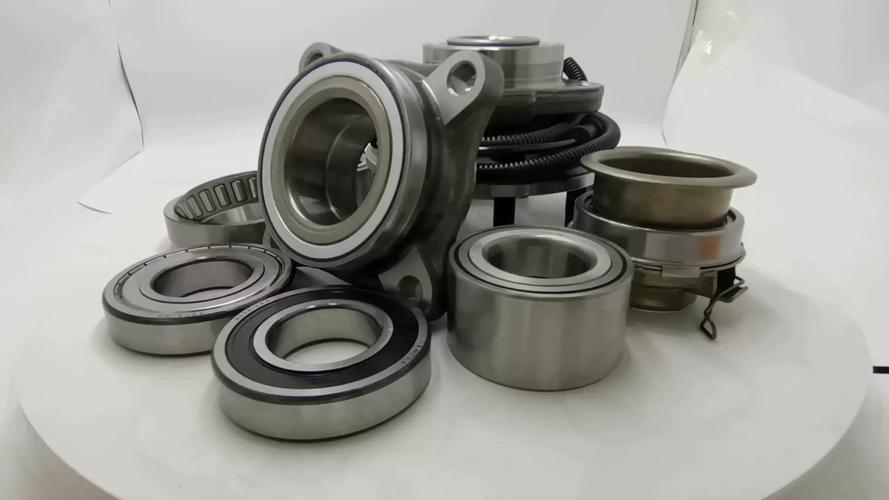Top Signs of Tapered Roller Bearing Failure and How to Prevent Them
Tapered roller bearings are crucial components in many mechanical systems, and their failure can lead to significant downtime and repair costs. Recognizing the early signs of bearing failure is essential for preventive maintenance and avoiding catastrophic equipment damage.
Table of Contents
1. tapered roller bearing noise symptoms2. tapered roller bearing vibration analysis
3. tapered roller bearing overheating causes
4. tapered roller bearing wear patterns
1. tapered roller bearing noise symptoms

Unusual noises are often the first noticeable sign of tapered roller bearing failure. Common sound indicators include grinding, rumbling, or screeching noises during operation. These sounds typically occur due to insufficient lubrication, contamination, or bearing wear. The pitch and frequency of the noise can help diagnose the specific issue. High-pitched sounds often indicate lubrication problems, while lower, rumbling noises suggest bearing raceway damage. Regular auditory inspections can help detect these early warning signs before complete bearing failure occurs. Proper lubrication maintenance and immediate attention to abnormal sounds can significantly extend bearing life and prevent costly equipment damage.
2. tapered roller bearing vibration analysis
Vibration analysis is a powerful diagnostic tool for detecting tapered roller bearing problems. Excessive vibration often precedes visible damage and can indicate various issues including misalignment, imbalance, or bearing wear. Specialized vibration monitoring equipment can detect specific frequency patterns associated with different bearing failure modes. Regular vibration analysis allows maintenance teams to identify developing problems early and schedule repairs during planned downtime. The vibration spectrum can reveal whether the issue lies in the inner race, outer race, rolling elements, or cage. Implementing a comprehensive vibration monitoring program is essential for predictive maintenance and avoiding unexpected bearing failures.
3. tapered roller bearing overheating causes
Overheating is a serious symptom of tapered roller bearing distress that can lead to rapid failure. Common causes include excessive loading, inadequate lubrication, improper installation, or contamination. Elevated temperatures can degrade lubricants and accelerate bearing wear in a destructive cycle. Thermal imaging and temperature sensors can help monitor bearing operating temperatures. Sudden temperature spikes often indicate severe problems requiring immediate attention. Proper lubrication selection, correct installation procedures, and load monitoring are crucial for preventing overheating issues. Regular thermal inspections should be part of any comprehensive bearing maintenance program to detect problems before they cause catastrophic failure.
4. tapered roller bearing wear patterns
Analyzing wear patterns provides valuable insights into tapered roller bearing condition and failure causes. Common wear patterns include spalling, pitting, brinelling, and fretting corrosion. Each pattern indicates specific operational issues such as overload, vibration during stationary periods, or lubrication problems. Regular visual inspections can detect early signs of abnormal wear before they progress to complete failure. Wear pattern analysis helps identify root causes of bearing problems, enabling corrective actions to prevent recurrence. Documenting wear patterns over time helps establish maintenance schedules and predict remaining bearing life. Understanding these patterns is essential for implementing effective preventive maintenance strategies.
Understanding these tapered roller bearing failure signs - noise symptoms, vibration patterns, overheating issues, and wear characteristics - is crucial for maintaining equipment reliability. Each symptom provides valuable diagnostic information that can help prevent catastrophic failures. By implementing regular monitoring for these warning signs, maintenance teams can schedule repairs during planned downtime, reducing unexpected breakdowns and extending equipment life. A comprehensive approach combining auditory, visual, vibration, and thermal monitoring offers the best protection against bearing failures. Stay vigilant for these warning signs to keep your machinery running smoothly and efficiently.
In conclusion, recognizing the early signs of tapered roller bearing failure is essential for maintaining operational efficiency and preventing costly downtime. By understanding noise symptoms, vibration patterns, overheating causes, and wear characteristics, maintenance professionals can implement effective predictive maintenance strategies. Regular monitoring and prompt attention to these warning signs will significantly extend bearing life and improve overall equipment reliability.




 13869596835
13869596835